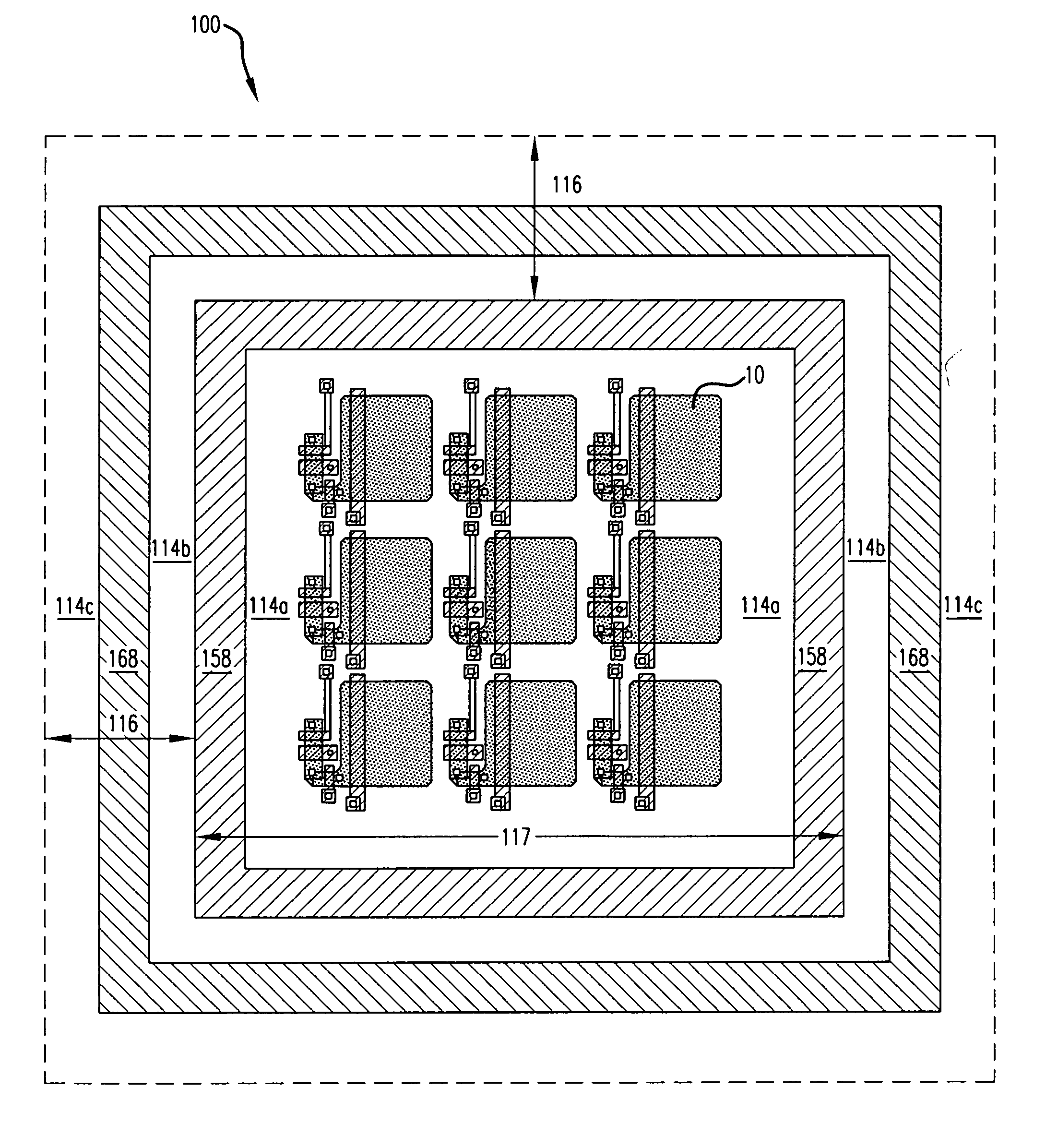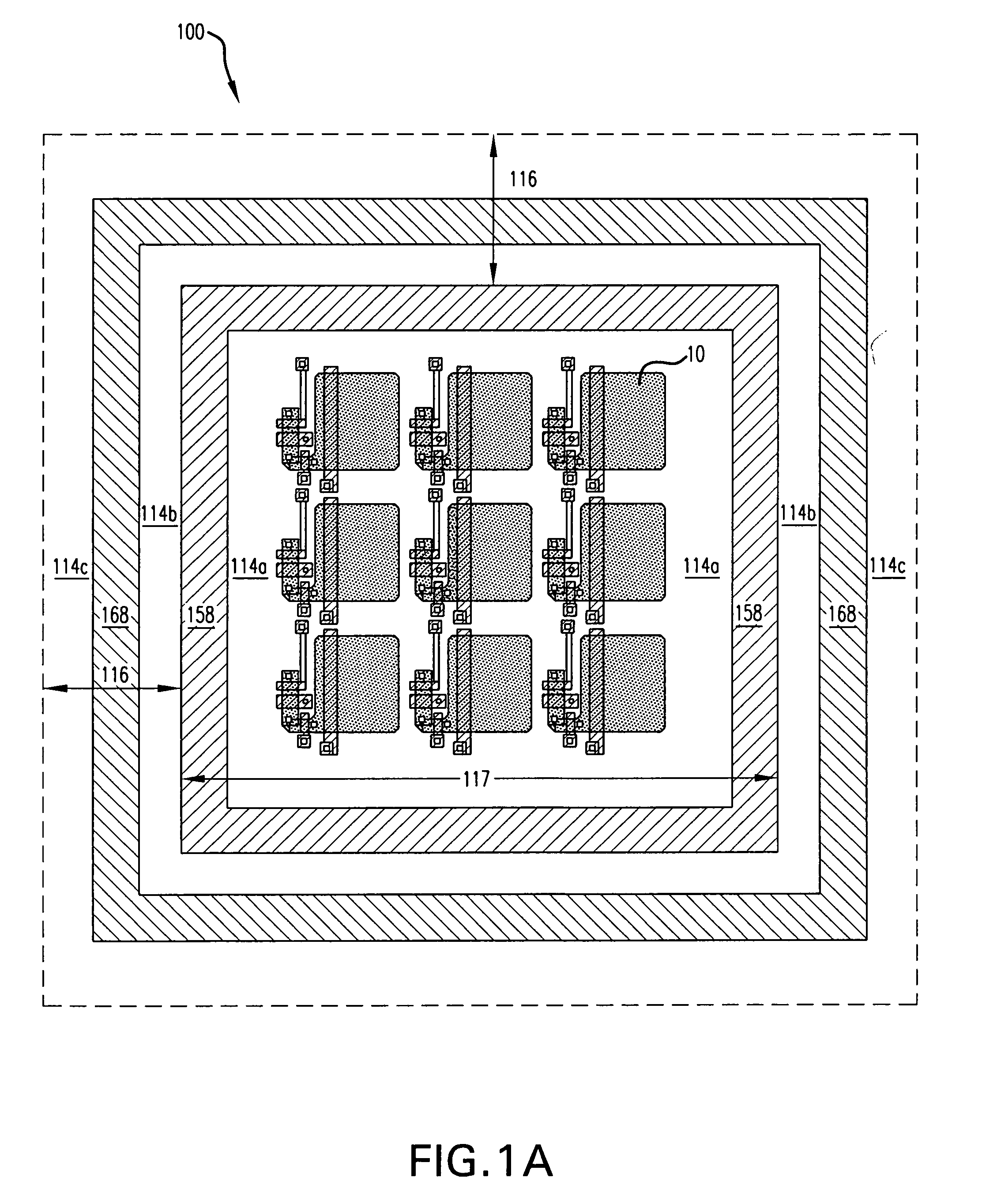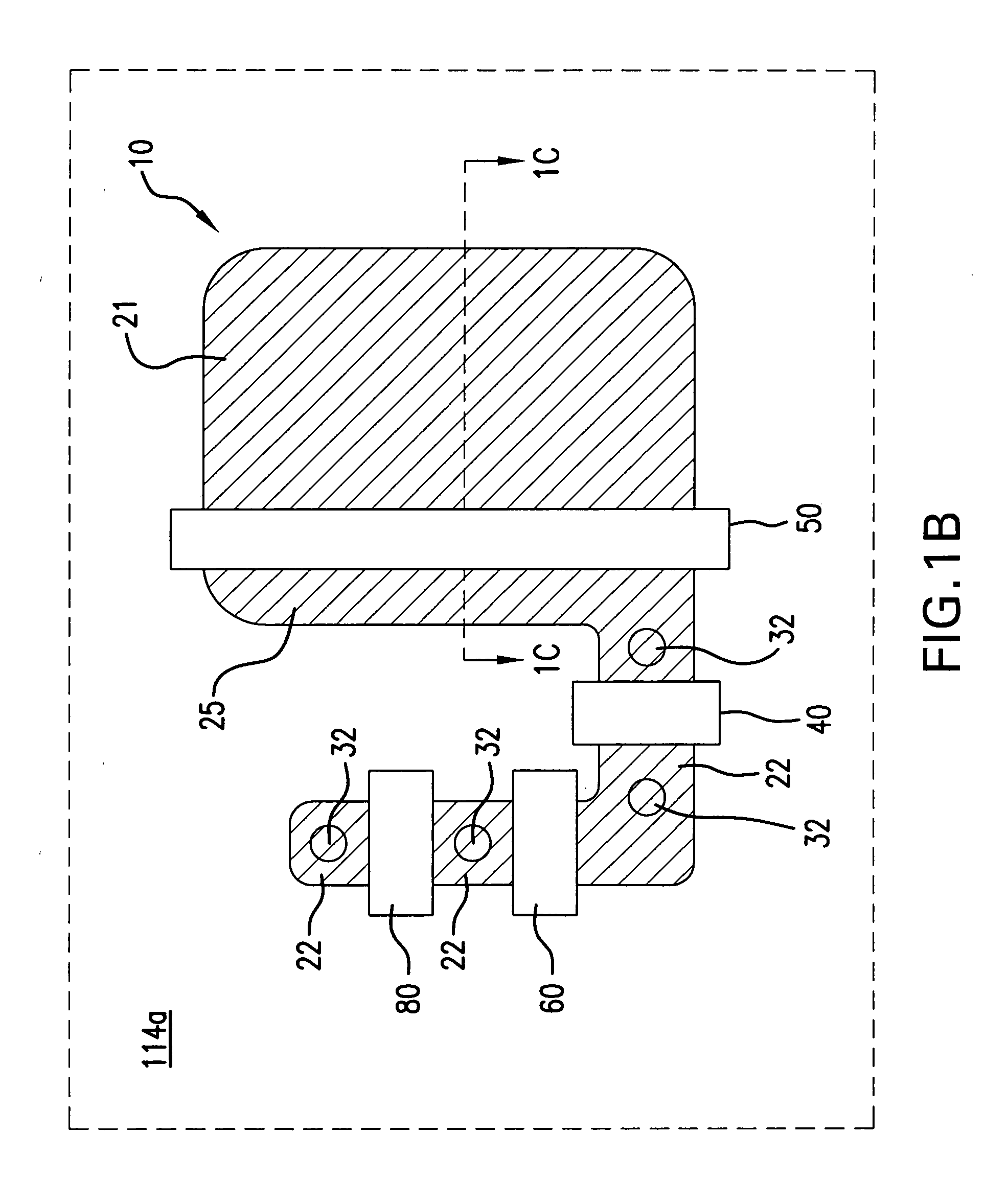Image sensor for reduced dark current
- Summary
- Abstract
- Description
- Claims
- Application Information
AI Technical Summary
Benefits of technology
Problems solved by technology
Method used
Image
Examples
first embodiment
[0049] The CMOS image sensor in accordance with the first embodiment may be fabricated using several fabrication processes. In a preferred embodiment of the fabrication process, depicted in FIGS. 12-15, the field oxide regions 114 are formed first, i.e., before the n-type region 166, and n-type sidewall 168 are formed. Referring now to FIG. 12, a first conductivity type implant, for example p-type, is provided into a substrate 112. Next, field oxide regions 114a, 114b, and 114c are formed in substrate 112. Referring now to FIG. 13, a deep n-type region 166 is formed in substrate 112 above p-type substrate area 112a and below p-type substrate area 112b. Next, as depicted in FIG. 14, an n-type sidewall 168 is formed. The n-type sidewall 168 and n-type region 166 form an n-type region isolation structure which separates the pixel array region 117 from the peripheral circuit region 116. Referring now to FIG. 15, one or more p-well implants are performed into second p-type substrate area...
second embodiment
[0058] Referring now to FIG. 6, which illustrates a CMOS image sensor fragment in accordance with the invention, indicated generally by reference numeral 200. Such comprises a p-type epitaxial or layer 212 formed over an n-type silicon substrate 210. It is also possible to implant the wafer with a p-type dopant and create p-type layer 212. The substrate includes a pixel array substrate region 217 and a peripheral circuit region 216. Field oxide regions 214 are provided in association with the peripheral substrate region 216 and pixel array substrate region 217. Although conductivity types are denoted in the description, for example, the substrate 210 is described as n-type and the epitaxial layer 212 is described as being p-type, these may be reversed and the invention is not limited to the arrangement of conductivity types as shown and described.
[0059] A peripheral n-type sidewall 268 is formed to extend through the epitaxial layer 212, and electrically contact the n-type substrate...
PUM
 Login to View More
Login to View More Abstract
Description
Claims
Application Information
 Login to View More
Login to View More - R&D
- Intellectual Property
- Life Sciences
- Materials
- Tech Scout
- Unparalleled Data Quality
- Higher Quality Content
- 60% Fewer Hallucinations
Browse by: Latest US Patents, China's latest patents, Technical Efficacy Thesaurus, Application Domain, Technology Topic, Popular Technical Reports.
© 2025 PatSnap. All rights reserved.Legal|Privacy policy|Modern Slavery Act Transparency Statement|Sitemap|About US| Contact US: help@patsnap.com



